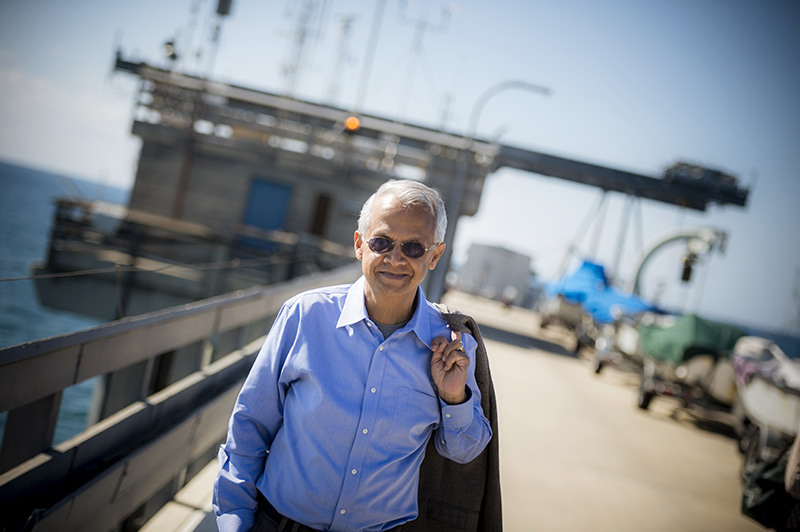Dr. Ramanathan discovered the greenhouse effect of halocarbons (chemical compound of the element carbon that contain one or more of the halogens such as chlorine, fluorine, iodine) in 1975. Previously, carbon dioxide was thought to be the sole greenhouse gas responsible for global warming. He also contributed to the early development of global circulation models and the detecting and attribution of climate change. His research accomplishments are prodigious and include predicting that global warming would be detected by 2000 and using satellite radiation budget instruments to conclude that clouds had a large global cooling effect.
Dr. Veerabhadran Ramanathan - 2018

In the 1990s, he discovered the widespread Atmospheric Brown Clouds (ABCs) over S. Asia, which have devastating health and climate impacts and developed light weight unmanned aerial vehicles to track pollution plumes from S. Asia, E. Asia and N. America. His recent finding that mitigation of short lived climate pollutants (black carbon, methane, ozone and HFCs) will slow down global warming significantly during this century has resulted in a proposal that was adopted by the United Nations and 30 countries including USA and a new coalition, called as the, Climate and Clean Air Coalition is implementing mitigation actions for short lived climate pollutants. Dr. Ramanathan has won numerous prestigious awards including the Tyler prize, the top environment prize given in the US; the Volvo Prize; the Rossby Prize and the Zayed prize.in addition. He has been elected to the US National Academy of Sciences, American Philosophical Society, the Pontifical Academy by Pope John Paul II and the Royal Swedish Academy of Sciences. Currently, he serves in Pope Francis' Council for the Pontifical Academy of Sciences and was the co-organizer of a 2014 Vatican meeting on "Sustainable Humanity, Sustainable Nature" of social and natural scientists, philosophers and policy makers.

